Writing a critical reflection in early childhood education involves a thoughtful examination of your experiences, thoughts, and feelings to gain insights and improve your teaching practice. The following article provides a Step-by-Step Guide, Example Outline and Example Reflection, Topics To Critically Reflect On In Early Childhood and more.
Step-by-Step Guide
Choose a Focus:
Identify a specific event, interaction, or aspect of your teaching practice to reflect on. This could be a lesson, a challenging situation, or an observation of children's behavior.
Describe the Experience:
Provide a detailed account of the event. Include the context, what happened, who was involved, and your initial reactions. Be specific and objective in your description.
Analyze Your Thoughts and Feelings:
Reflect on your thoughts and emotions during and after the experience. Consider what influenced your reactions and why you felt the way you did.
Evaluate the Experience:
Critically assess what went well and what didn’t. Identify the strengths and weaknesses of your actions and decisions. Consider the impact on the children and their learning.
Connect to Theory and Practice:
Relate your experience to relevant theories, concepts, or best practices in early childhood education. This helps you understand the broader implications and deepen your insights.
Identify Areas for Improvement:
Based on your analysis, determine areas where you can improve your practice. Consider what you would do differently in similar situations in the future.
Create an Action Plan:
Develop a plan to implement the changes you’ve identified. Set specific, achievable goals and outline the steps you will take to reach them.
Reflect on the Process:
Finally, reflect on the process of writing the critical reflection. Consider what you’ve learned about yourself and your teaching practice and how this knowledge will inform your future actions.
Example Outline
Introduction:
Briefly introduce the focus of your reflection and why you chose it.
Description:
Provide a detailed account of the event or experience.
Describe the context and key details.
Analysis:
Reflect on your thoughts and feelings.
Analyze what influenced your reactions.
Evaluate what went well and what didn’t.
Connection to Theory:
Relate the experience to relevant theories or best practices.
Discuss how these concepts help explain your actions or decisions.
Improvement:
Identify areas for improvement.
Suggest changes you would make in similar situations.
Action Plan:
Outline specific steps to implement the changes.
Set achievable goals for improvement.
Conclusion:
Summarize key insights gained from the reflection.
Reflect on the overall process and its impact on your practice.
Example Reflection
Introduction: I chose to reflect on a challenging interaction I had with a child who was struggling to adjust to the classroom environment. This experience highlighted the importance of effective communication and emotional support.
Description: During the first week of school, I noticed that Jamie, a four-year-old child, was having difficulty separating from their parent. Each morning, Jamie would cling to their parent and cry inconsolably. Despite my efforts to comfort Jamie, they remained distressed.
Analysis: I felt frustrated and helpless as I watched Jamie struggle. I realized that my usual calming techniques were not effective in this situation. My feelings of frustration were influenced by my desire to create a positive and supportive environment for all children.
Connection to Theory: According to attachment theory, a child's bond with their caregiver plays a crucial role in their emotional development. Jamie's distress was likely a result of their strong attachment to their parents and the anxiety of being in a new environment without them.
Improvement: I need to improve my strategies for supporting children with separation anxiety. I could have sought more information from Jamie's parents about their routines and preferences. Additionally, I should have provided a consistent and comforting presence to help Jamie feel secure.
Action Plan: To support children with separation anxiety, I will:
- Communicate with parents to understand their child's needs and routines.
- Establish a consistent morning routine to help children feel secure.
- Use comforting objects, such as a favorite toy, to ease transitions.
Conclusion: This reflection has helped me recognize the importance of understanding individual children's needs and using evidence-based strategies to support them. I will apply these insights to create a more nurturing and responsive classroom environment.
Topics To Critically Reflect On In Early Childhood
Here are some key topics to critically reflect on in early childhood education:
Child Development: Reflect on your observations of children's developmental milestones and how your practices support their growth.
Behavior Management: Analyze your strategies for managing challenging behaviors and their effectiveness. Consider how you can improve your approach to promote positive behavior.
Learning Environment: Evaluate the setup and organization of your classroom or learning space. Reflect on how it supports children's learning and engagement.
Curriculum Planning: Reflect on your lesson plans and activities. Consider how they align with developmental goals and cater to children's interests and needs.
Inclusive Practices: Assess your strategies for including all children, regardless of their abilities, backgrounds, or needs. Reflect on how you can create a more inclusive environment.
Family Engagement: Reflect on your communication and collaboration with families. Consider how you can strengthen partnerships and involve families in their children's learning.
Professional Development: Evaluate your ongoing learning and development. Reflect on areas where you need to improve your skills and knowledge.
Child Assessments: Analyze your methods for assessing children's progress and development. Reflect on how you can use assessments to inform your teaching practices.
Cultural Competence: Reflect on your understanding and respect for diverse cultures. Consider how you can incorporate multicultural perspectives into your teaching.
Self-Care: Reflect on your own well-being and how it affects your teaching. Consider how you can practice self-care to maintain a healthy work-life balance.
NQS: Examining your practices and identifying areas for improvement to ensure high-quality education and care.
Further Reading
Educators Guide To Critical Reflections
Reflection Vs Critical Reflection
Critical Reflection Questions For NQS QA1
Critical Reflection Questions For NQS QA2







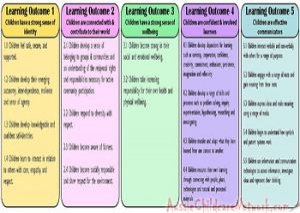 Here is the list of the EYLF Learning Outcomes that you can use as a guide or reference for your documentation and planning. The EYLF
Here is the list of the EYLF Learning Outcomes that you can use as a guide or reference for your documentation and planning. The EYLF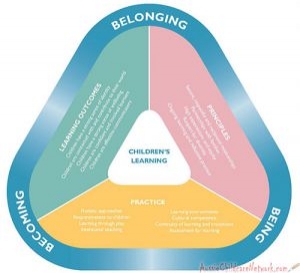 The EYLF is a guide which consists of Principles, Practices and 5 main Learning Outcomes along with each of their sub outcomes, based on identity,
The EYLF is a guide which consists of Principles, Practices and 5 main Learning Outcomes along with each of their sub outcomes, based on identity, This is a guide on How to Write a Learning Story. It provides information on What Is A Learning Story, Writing A Learning Story, Sample
This is a guide on How to Write a Learning Story. It provides information on What Is A Learning Story, Writing A Learning Story, Sample One of the most important types of documentation methods that educators needs to be familiar with are “observations”. Observations are crucial for all early childhood
One of the most important types of documentation methods that educators needs to be familiar with are “observations”. Observations are crucial for all early childhood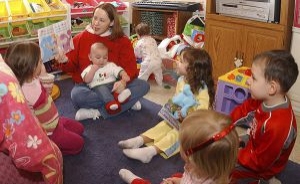 To support children achieve learning outcomes from the EYLF Framework, the following list gives educators examples of how to promote children's learning in each individual
To support children achieve learning outcomes from the EYLF Framework, the following list gives educators examples of how to promote children's learning in each individual Reflective practice is learning from everyday situations and issues and concerns that arise which form part of our daily routine while working in an early
Reflective practice is learning from everyday situations and issues and concerns that arise which form part of our daily routine while working in an early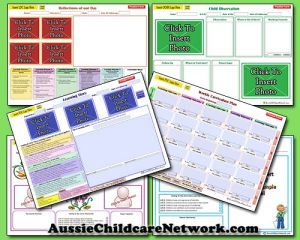 Within Australia, Programming and Planning is reflected and supported by the Early Years Learning Framework. Educators within early childhood settings, use the EYLF to guide
Within Australia, Programming and Planning is reflected and supported by the Early Years Learning Framework. Educators within early childhood settings, use the EYLF to guide When observing children, it's important that we use a range of different observation methods from running records, learning stories to photographs and work samples. Using
When observing children, it's important that we use a range of different observation methods from running records, learning stories to photographs and work samples. Using This is a guide for educators on what to observe under each sub learning outcome from the EYLF Framework, when a child is engaged in
This is a guide for educators on what to observe under each sub learning outcome from the EYLF Framework, when a child is engaged in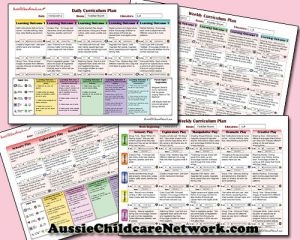 The Early Years Learning Framework describes the curriculum as “all the interactions, experiences, activities, routines and events, planned and unplanned, that occur in an environment
The Early Years Learning Framework describes the curriculum as “all the interactions, experiences, activities, routines and events, planned and unplanned, that occur in an environment


